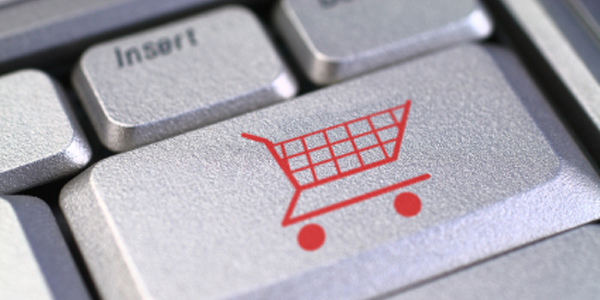In the digital age, organizations as a whole and procurement departments in particular swim in data. It is everywhere, spread across an alphabet soup of internal and external systems – some connected, some not; some refined, some not; some structured, some not. It wasn’t always this way. Twenty-five years ago, the procurement function was manual, paper-based, and transaction-oriented. “Data” was but a character on Star Trek: The Next Generation. All of that has changed in the past 15 years, following the dot.com bubble and the wave of digitization, connectivity, and automation that has swept over the world. Now, “Big Data” permeates and drives the digital world, and it will only get more intense from here.
There is a Big Data “crisis” sweeping organizations and procurement teams today. But with the right people, processes, technologies, and ultimately the right attitude, this “crisis” can be an opportunity for Chief Procurement Officers (CPOs) and their teams to transform operations and deliver more value to the enterprise. Technologies exist today that allow procurement to not only manage Big Data up and down the source-to-settle value chain, but also leverage it for greater value.
This series explores further each of the eight sub processes of the source-to-settle process to illustrate just how Big Data can be managed and leveraged to make procurement’s life easier and extract the most value out of the data residing inside and outside of the enterprise. Next up, eProcurement.
What is eProcurement?
As a refresher, eProcurement is the transactional end of the source-to-settle process, akin to the online marketplaces that we use in our personal lives (like Amazon Prime). eProcurement tools are digital portals where users (whether they are from procurement or elsewhere in the enterprise) log in and purchase goods and services directly from suppliers. These tend to be indirect in nature (aside from travel and entertainment expenses, or expenses that are below a certain threshold), but can also include direct materials. Users search by category, supplier, or the type of widget they are or looking, filter results by setting price, and compare results. Some eProcurement tools feature “punch out catalogs,” which, when accessed, “punch” the user “out” to the supplier’s site but link them back to the enterprise when they make a purchase. eProcurement tools automatically issue a purchase order with the supplier and a requisition with procurement.
If the quantity of goods/services to be purchased is high enough (as determined by internal policy), or if the total value/price of that requisition reaches a high enough threshold, then procurement may have to run a full-blown sourcing event. Likewise, if the goods/services are below another threshold, the purchase could be handled out of petty cash or through employee expense/reimbursement. But for the most part, eProcurement tools are best used to handle the bulk of enterprise-wide purchases. In fact, it is in the Chief Procurement Officer’s (CPO’s) best interest to drive eProcurement adoption because the tools can help CPOs and procurement teams pull more spend under influence, or management. From there, they can increase visibility into buying behaviors and change them. They can also aggregate a lot of internal financial data, which can be exploited by the enterprise (in a good way!) in a variety of ways.
How Do eProcurement Tools Manage and Leverage Big Data?
CPOs and procurement teams can use eProcurement systems to capture much (if not all) of the transactional data residing within the enterprise so that they have visibility into that spend and can make prudent adjustments. If the eProcurement tool is part of a source-to-settle solution suite, or even if it is connected to a best-of-breed solution, it can feed spend analysis processes and tools. This can drive visibility into the procurement and purchasing processes and allow the organization to further understand buying behaviors – i.e., who is spending what with whom, and how, and whether the enterprise as a whole or procurement in particular can do better.
For example, CPOs can use the transactional data generated by eProcurement tools to negotiate with a supplier. Maybe the price they are paying per widget is too high relative to the market; or maybe they can consolidate supplier relationships among a half dozen suppliers and source items from one supplier that can cut them a discounted, bulk rate. Transactional data generated by eProcurement tools also allows CPOs and procurement teams to understand cycle times and find new suppliers based upon what the organization is doing in the market. They can take reams of transactional data, run it through complex algorithms that allow them to study market fluctuations, and come up with optimal times to purchase goods and services that will give the enterprise the best price, quality, reliability, and service relative to the market.
Final Thoughts
Like every other source-to-settle solution, eProcurement tools harbor hidden opportunities to take procurement operations to the next level of performance. With all of the transactional data floating in and out of eProcurement solutions, procurement leaders and practitioners can “mine” that data to uncover hidden insight into suppliers, spend, markets, categories, and buying behaviors. And they can use that visibility and intelligence to alter behaviors, renegotiate contracts, terms and conditions, and look at commodity markets in new lights to exploit them in ways that give them a competitive advantage.
RELATED ARTICLES
How Source-to-Settle Solutions Manage (and Leverage) Big Data – Supply Risk Management
How Source-to-Settle Solutions Manage (and Leverage) Big Data – Supplier Performance Management
How Source-to-Settle Solutions Manage (and Leverage) Big Data – Supplier Information Management
How Source-to-Settle Solutions Manage (and Leverage) Big Data – Contract Management
How Source-to-Settle Solutions Manage (and Leverage) Big Data – eSourcing
How Source-to-Settle Solutions Manage (and Leverage) Big Data – Spend Analysis

